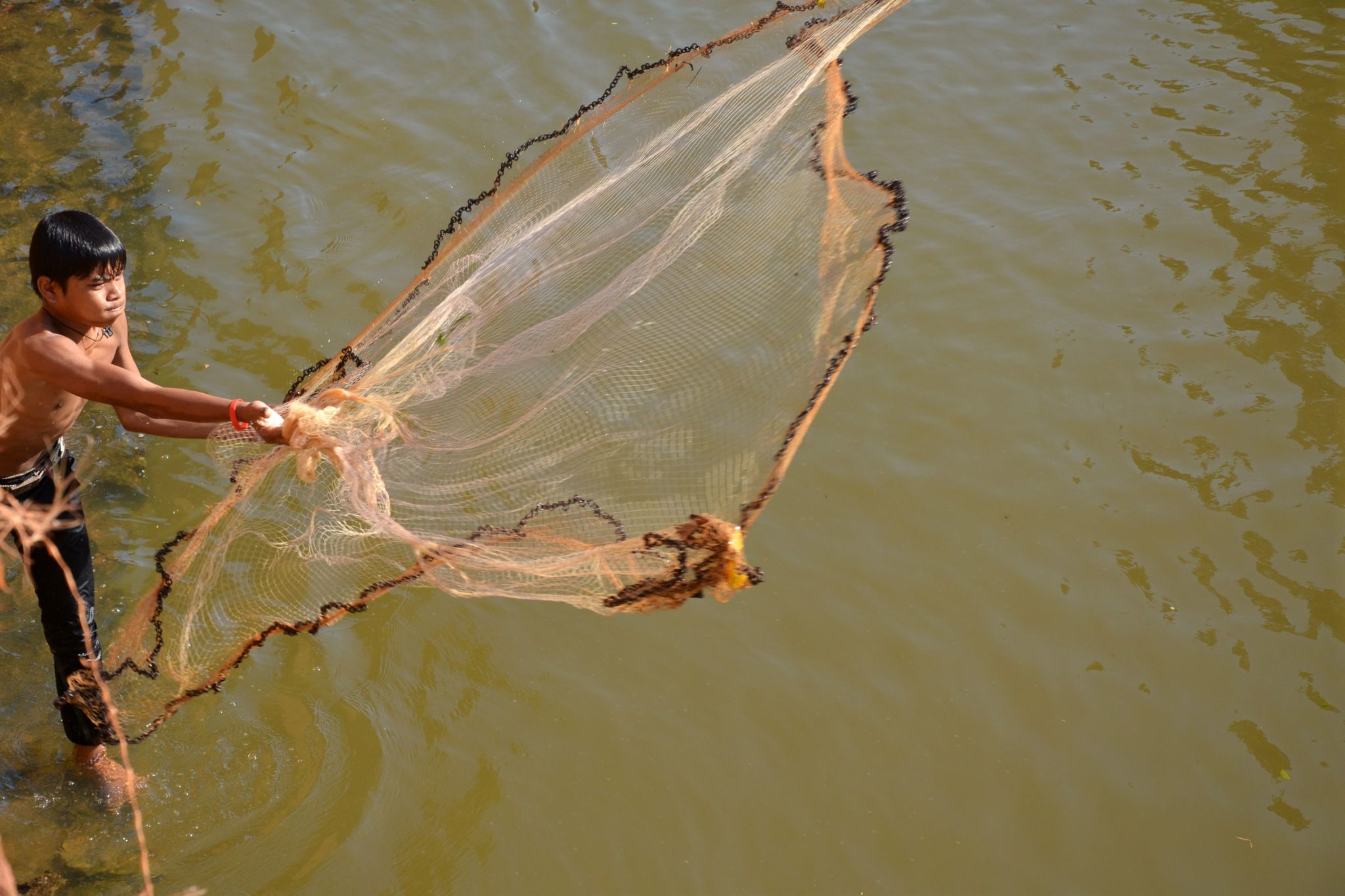
What is the Best Siem Reap Floating Village? That’s a good question…
When planning your trip you need to decide whether to visit Kompong Khleang or Kompong Phluk. These two floating villages feature subtle differences that tourists should keep in mind when making their choice. Below we have discussed some of the important differences. We hope it helps you make your determination on the best Siem Reap floating village for you.

TIME & DURATION:
When you only have a short amount of time in Siem Reap timing is of the essence. There are so many things to do and see and you need to pack in as much as possible. With that in mind, one of the big advantages of Kompong Phluk is its relative proximity to Siem Reap. Depending on the water levels it can be less than an hour drive from Siem Reap by both car or tuk-tuk. The floating village’s smaller size also makes the boat ride a bit shorter. As the tour itself (not including things like waiting for sunset or having a meal) takes about two hours you can safely be back in Siem Reap in four. This leaves you the entire morning or afternoon to see more what the city has to offer. This makes it the best Siem Reap floating village for guests with a limited timeframe.
Kompong Khleang is 50 kilometers from Siem Reap (although it depends on time of year and water levels). As it is much further it will take at least an hour to arrive by car and up to two hours by tuk-tuk in the dry season. Kompong Khleang is also a larger floating village. As a result the boat ride is much longer, especially in the dry season where boats drive slower. If you decide to visit and see the Tonle Sap it can take up to two hours. To visit Kompong Khleang you need to budget at least five hours for this trip if traveling by car. It will be helpful to budget six hours if you want to travel at a leisurely pace. For more information read this dry season trip report which discusses timing.
WINNER: Kompong Phluk

“AUTHENTICITY”:
This is a very important (albeit slightly subjective) metric and the reason we chose to put it in brackets. Part of the fun of floating village tours is seeing a real, undisturbed village. It does not feel as authentic when you see English signs and tourist businesses. For that reason Kompong Khleang wins the authenticity debate. It lacks the tourism infrastructure. There are no restaurants serving Western food, locals selling souvenirs, or boat drivers speaking English. You feel like you are driving through a village as locals carry on with their daily life. Residents will be fishing, doing laundry, and tending to their fish farms whether you are there or not.
As we mentioned earlier this view is very subjective. While there are more tourist amenities in Kompong Phluk it is still a real floating village. Thousands of residents have lived here since before the Khmer Rouge. The addition of community based tourism has also been beneficial. More jobs were created and many families now earn a living driving the boats or serving food. So visiting Kompong Phluk is still authentic (it is a real village) and it helps the local economy as well.
WINNER: Kompong Khleang
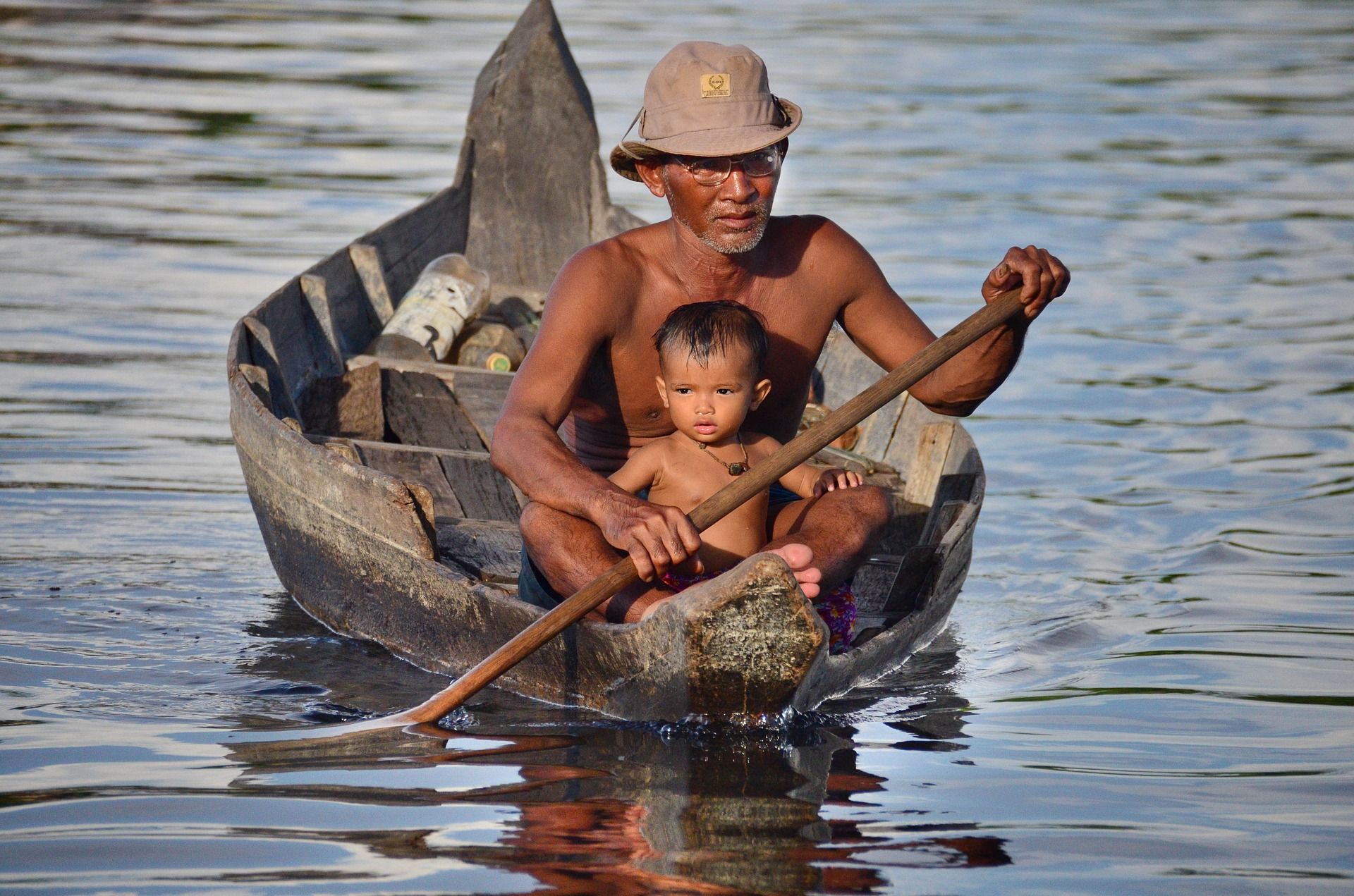
FLOODED FOREST:
One of the biggest draw to Kompong Phluk is the large mangrove forest after the floating village. While it is optional when traveling alone, no trip to Kompong Phluk is complete without a visit. During this experience you are paddled through the mangroves by a local. You will see massive trees, shrimp traps, and if you are lucky some wildlife. It lasts about 30 minutes and only costs $5 (not including gratuities). It is definitely worth your time during the visit. [Please note this $5 boat ride is included in the price of The Tonle Sap Experience’s tour of Kompong Phluk.]
Kompong Khleang as of writing does not have a comparable mangrove forest. The cooperative running the boat tours has discussed offering this option, as Kompong Khleang also has mangroves. While it is possible for small, private tours (there is one lady that can be towed by boat to a forest) it is not possible for group tours. Even so, while you won’t take a canoe through the mangroves, tourists still see them on their way to the Tonle Sap. This makes for a great photo opportunity but is not the best Siem Reap floating village for the flooded forest.
WINNER: Kompong Phluk
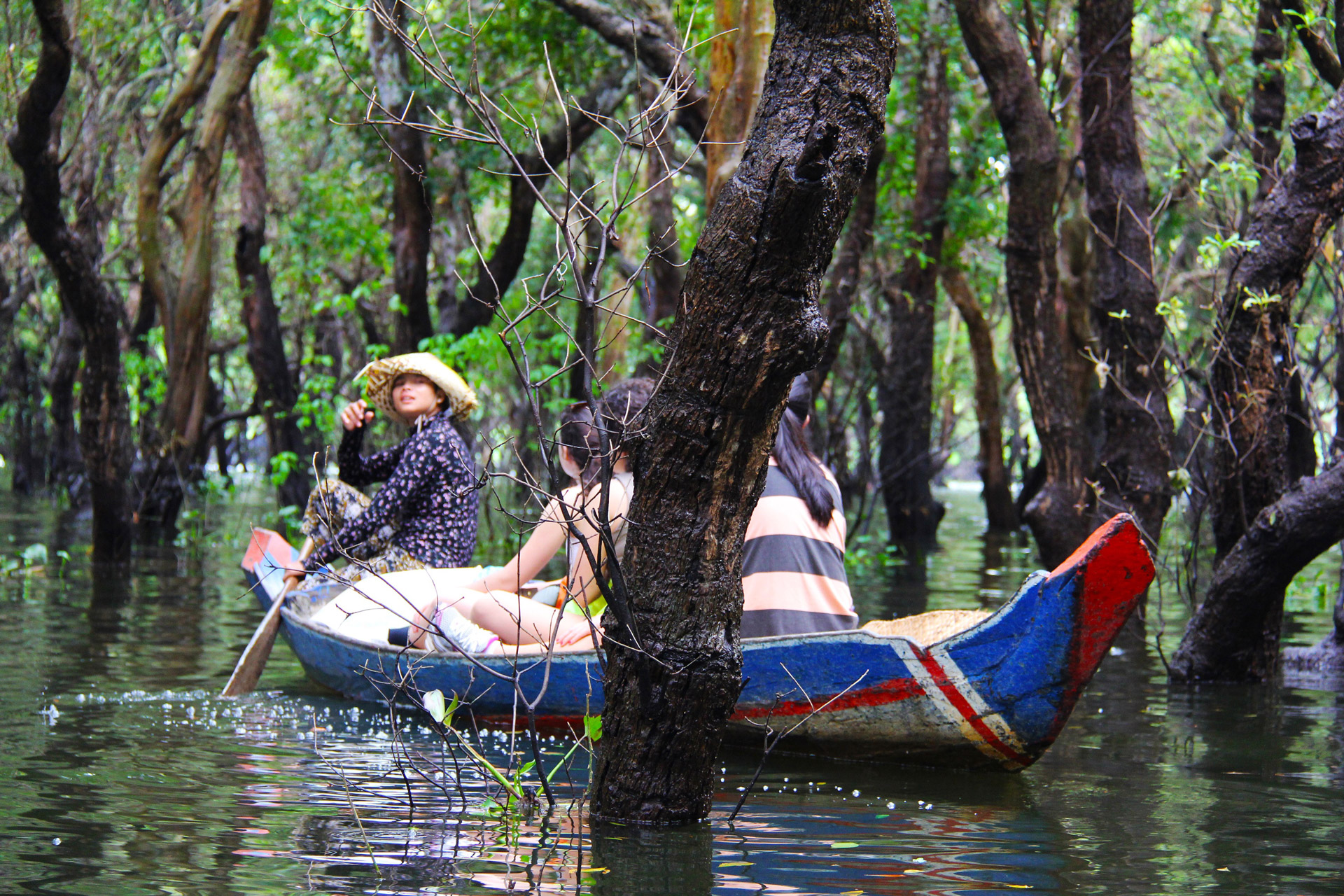
SIZE & SIGHTSEEING
One of the stark contrasts between Kompong Khleang and Kompong Phluk is the size of the villages. As mentioned earlier, Kompong Phluk tours spend less time in the village. This is because the village is much smaller – around 2,000 – 3,000 residents live there. This is different than Kompong Khleang which is home to 14,000 residents.
Because the floating village is larger you will have the benefit of seeing more things. For example, Kompong Phluk has one pagoda but Kompong Khleang has four pagodas. Kompong Khleang has more homes as well as a Khmer and ethnic Vietnamese floating village. There is also a large market at Kompong Khleang which does not exist at Kompong Phluk. We are able to stop at a real, registered NGO called Bridge of Life School. It works on the lake and tourists can see how it’s programming benefits the village. Lastly, we can try sticky rice from a famous village which is past Kompong Phluk on the way to Kompong Khleang.
WINNER: Kompong Khleang
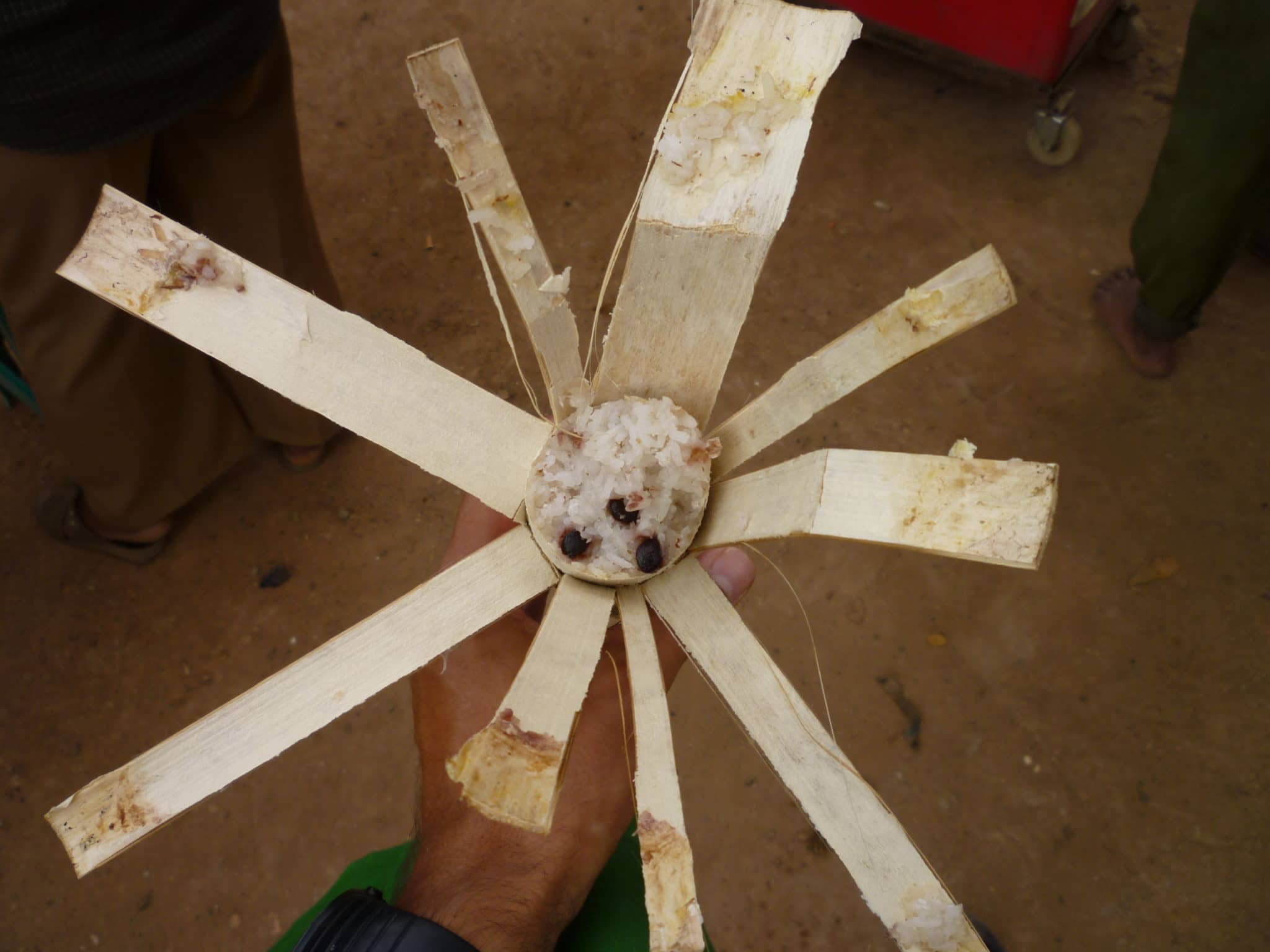
Fresh Sticky Rice cooked in Bamboo.
WINNER?
So, which is the best Siem Reap floating village? The reality is that there is no clear cut winner – each floating village has many things to offer. When choosing your tour you should think about your time frame and interests. If you are here for a shorter period of time, are looking for a more affordable option, and would like to see the flooded forest we recommend visiting Kompong Phluk. If you have more time in Siem Reap, would like to see (and taste) more of the rural countryside, and are interested in community development, Kompong Khleang is the floating village for you.

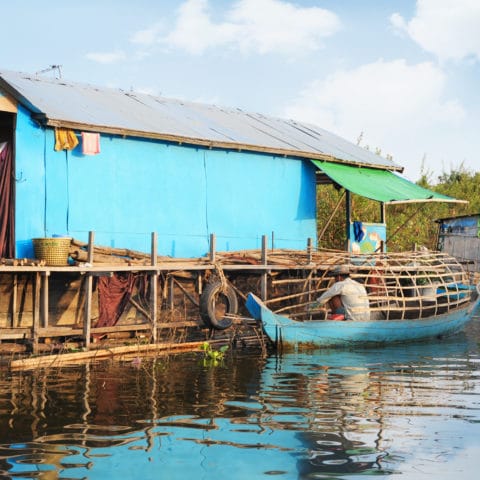
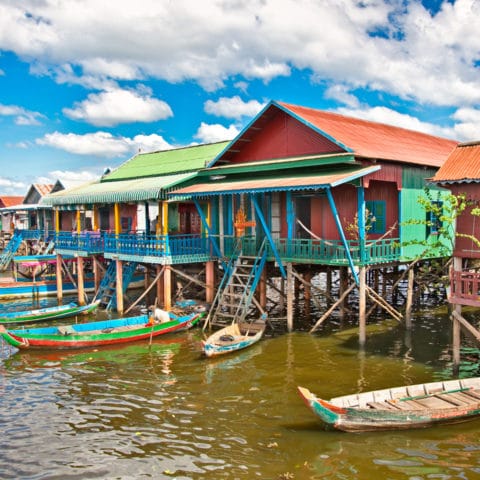
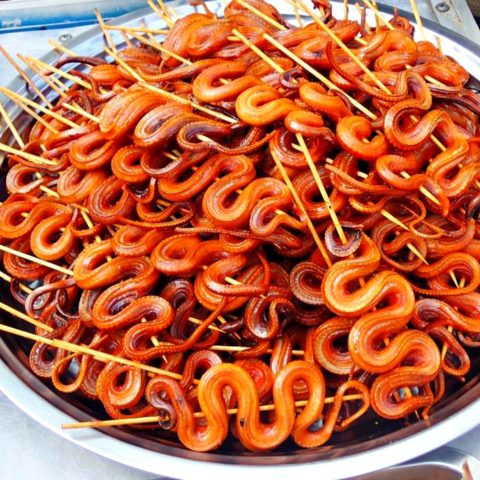

Leave a Reply